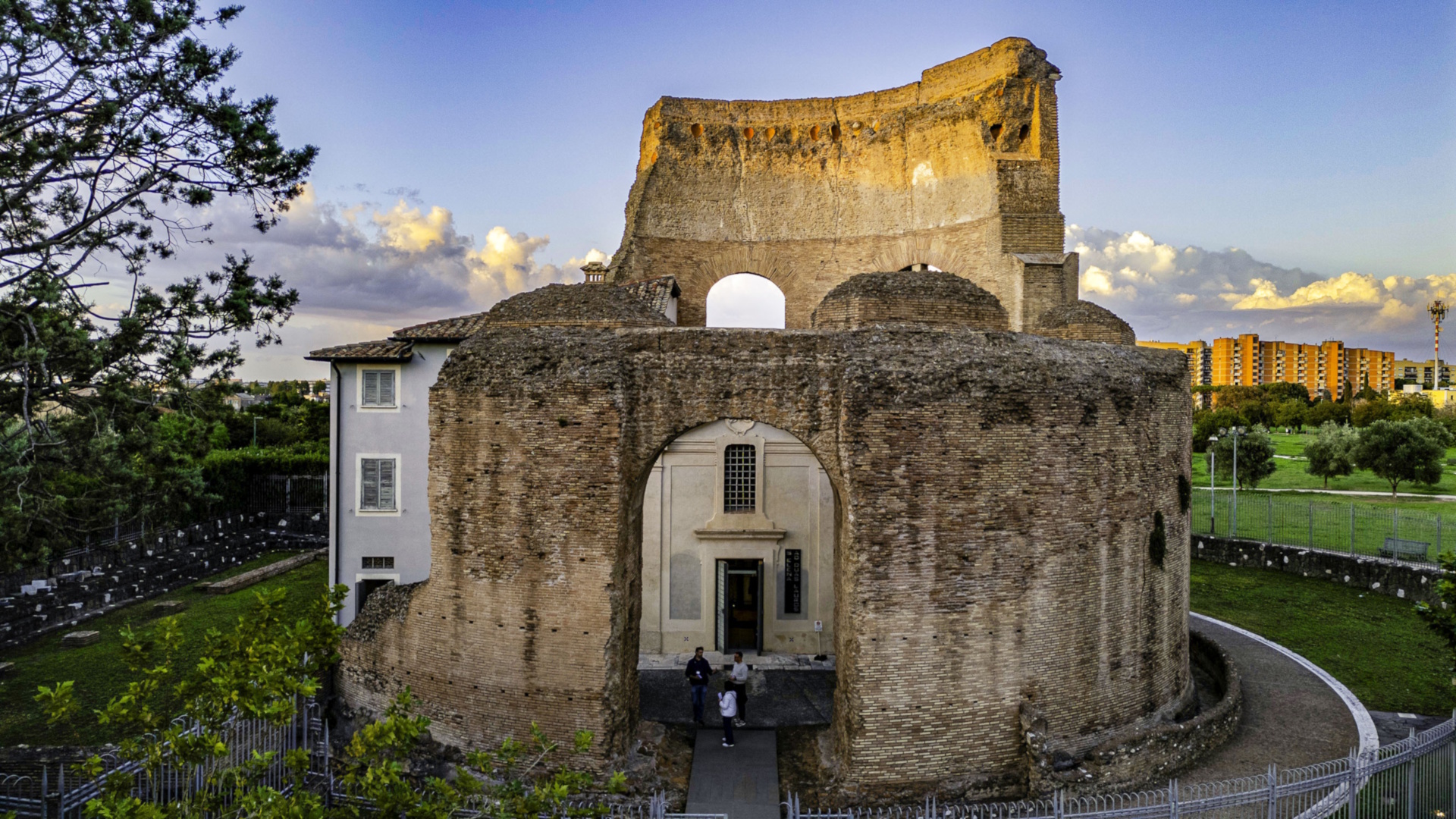
It is one of those monuments of ancient Rome whose imposing remains still amaze us today. The beautiful porphyry sarcophagus of Saint Helena, preserved in the Vatican Museums, comes from here, and it is precisely this structure, nicknamed “torre delle pignatte” (the tower of the pots) in the Middle Ages, that gave the Tor Pignattara district its name. Embedded in the concrete conglomerate at the base of the imposing dome, to lighten the weight of the construction, the empty amphorae popularly known as “pignatte” are still visible today.
It is located along Via Casilina, in the south-eastern part of the city, in an area that was probably imperial property and that was known as “ad duas lauros” (due to the presence of two laurel trees or the decoration with laurel branches on the walls of a villa). Between the 2nd and 3rd centuries AD, the area was occupied by the cemetery of the equites singulares, the knights of the imperial guard, but also by the tombs of some Christian martyrs. Between 315 and 326 AD, Emperor Constantine chose this area to build a circular basilica in honor of Saints Marcellinus and Peter, who were killed during the Diocletian persecution and buried in the nearby catacombs. A few years later, a mausoleum was built next to the eastern façade of the basilica. It was probably intended as a funerary monument for the emperor and the imperial family but later assigned to Constantine’s mother Helena.
The building has a circular plan with a diameter of over 20 meters and a domed roof. It consisted of two overlapping cylinders. The lower one had eight niches, alternatively rectangular and semicircular. One of the niches housed the entrance while the others contained sarcophagi. The largest niche most likely contained the sarcophagus of Helena. Between the 11th century, when Helena’s body was transferred, and the 12th century, when her sarcophagus was moved to the Lateran, the mausoleum gradually fell into ruin. In the 17th century, a small church dedicated to Saints Marcellinus and Peter and an adjoining rectory were built inside the mausoleum, which were then enlarged in the following century. The modern church next to the monument (also dedicated to Saints Marcellinus and Peter) was built under Pius XI.
The enhancement and restoration project completed in November 2025 improved the site’s accessibility (with tactile panels and the construction of ramps and stair lifts) and reopened the 18th-century passageway connecting the Mausoleum’s Antiquarium with the catacombs of Saints Marcellinus and Peter below.
Photo Soprintendenza Speciale Archeologia Belle Arti e Paesaggio di Roma
Information
For the opening times and guidelines please check the official website
 Condividi
Condividi
Location
To find out about all accessibility services, visit the Rome accessible section.











































